What I read in 2023
As the year is coming to an end, it is time for me to reflect back on what I read this year. Just like last year, I ended up reading about a book a week. That’s a pretty good pace for me, and one that I plan on keeping next year as well.
My five favorite (☆) books of the year were:
- Nonviolent Communication (3.)
- Sophie’s World (11.)
- The Cuckoo’s Egg (14.)
- The Undoing Project (30.)
- Outlive (45.)
For the first half of the year, I read my usual mix of tech, nonfiction, pop-scientific and applied psychology books. During the past few months, I pivoted to reading a lot more about health and biology, which has been really interesting.
1. Journey to the Edge of Reason

Kurt Gödel was a mathematician who made significant contributions to the field of logic. He grew up in what back then was Austria-Hungary and lived there through a tumultuous period of history, including World War 1 and parts of World War 2. Eventually he fled to the US where he spent his remaining life in Princeton.
The book Journey to the Edge of Reason tells the story of Gödel’s life. It gives detailed context on the environment that Gödel grew up in, explaining the preceding two hundred years of Austrian-Hungarian history. Initially I thought the book gave too much historical background information instead of focusing on Gödel himself. However, I ended up finding the context to be really helpful to get a better sense of the world back then. Gödel lived a fascinating life, and it was really interesting to read about it.
2. Things A Computer Scientist Rarely Talks About

Donald Knuth is one of the founding fathers of the field of analyzing algorithms. He also happens to be religious. In Things A Computer Scientist Rarely Talks About, Knuth discusses his view on faith and how it relates to his work in computer science. He discusses topics like randomness, aesthetics and language translation.
Knuth has a brilliant mind and I really enjoyed reading his views on things. However, it is worth mentioning that the book is derived from a set of lectures, which often feel more like a loose conversation than a well-structured book.
3. Nonviolent Communication ☆
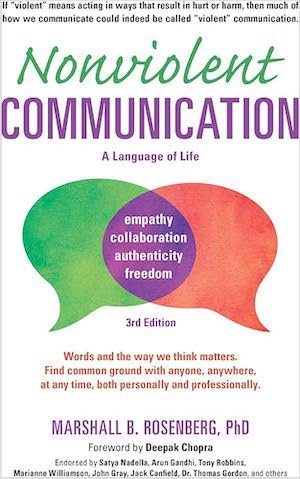
Nonviolent Communication is an approach to communication for discussing difficult topics. It is based on structuring such a conversation into four well-defined parts: an observation, the effect on one’s feeling, how that relates to one’s need, and finally a request to the other person. By strictly separating observations, feelings, needs, and requests, conversations are supposed to become more grounded and it should be easier to focus on how to resolve conflicts.
I had seen this approach recommended in a lot of places, some referring to the book and others referencing a popular video of the author explaining the concept. Initially, I was not too interested in the content since the video seemed quite unstructured and not necessarily that scientific. However, in the end, the recommendations of a couple of friends convinced me. Satya Nadella, Microsoft’s CEO, for example also wanted all of his direct reports to read the book when he became CEO, in order to move to a better style of communication in the company.
I ended up really liking the book. It is very clearly structured and explains the concepts in a nice bottom-up manner. Many chapters end with exercises that are also really helpful. I cannot believe that it took me this long to read the book, and wish I had done so sooner. In hindsight, it would have made some relationships a lot easier if I had been able to communicate in the manner that the book advocates for.
4. After Steve
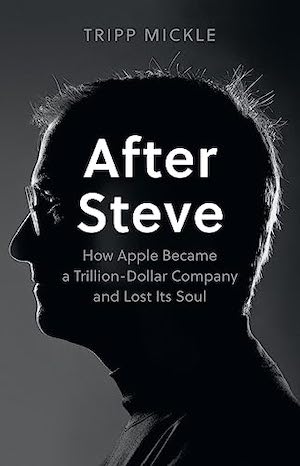
After Steve tells the story of Apple in the decade after Steve Jobs passed away. It mostly focuses on Tim Cook and Jony Ive, describing their background stories, their personal visions for the company, and how they led Apple through that decade. The reader then learns how various products happened and how different people influenced these products.
I found the book to be incredibly interesting. I really enjoyed hearing about how Apple developed their products and how they overcame various difficulties. To me the title “How Apple Became a Trillion-Dollar Company and Lost Its Soul” also seems like a misnomer after reading the book. A more apt title to me would be “How Apple Became A Trillion-Dollar Company and Handled Various Challenges Fairly Well”, based on how things are characterized in the book.
5. Good Arguments
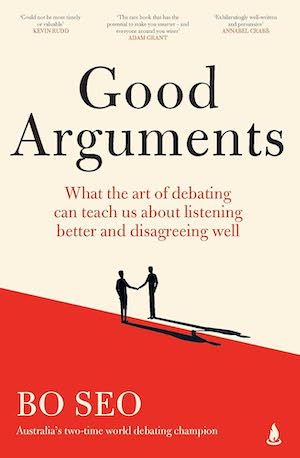
Beo Seo is a world champion in debating, having won both the high school and university debating world championships. Good Arguments is written in the style of an autobiography, telling Seo’s story of how he got into debating and excelled at it. Along the way, he provides lots of advice on how to have better arguments and on how to be more convincing.
While it was generally fascinating to get a glimpse into the world of debating, I do not think that I was able to learn that much from the book. After having read Nonviolent Communication this year, the world of debating seems somewhat toxic to me. While I understand that this is due to debating being a competition, I disliked that everything is about winning the argument and finding more convincing rhetorics, instead of the real goal of better understanding each position and maybe arriving at some compromise. It looks like I side more with Socrates than Gorgias on the topic of rhetorics.
6. Dataclysm
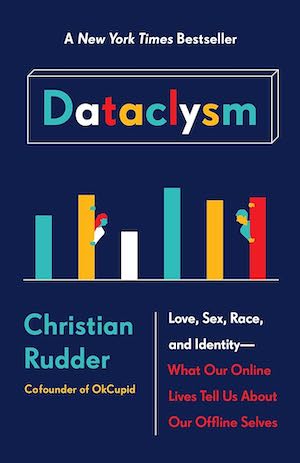
Dataclysm is a book written by Christian Rudder, the co-founder of a dating application, OkCupid. In the book, Rudder analyzes aggregated online data to show various patterns. Some of these are taken from OkCupid and revolve around dating. Others are from more generic social networks or websites.
I enjoyed learning about the statistics, and liked how neatly they got presented. One can learn really interesting things by looking at large aggregates of social behavior. The book does however not have a very high information density, as it only shows a few such analyses, which I found a bit frustrating.
7. Attached

Attachment theory is a general psychological theory around how people interact with each other. It classifies people into having an anxious, avoidant or secure communication style. One can apply the theory to interactions of children, but also to the dating world. The book Attached, covers the latter topic, and has become somewhat of a cult book.
I really liked reading the book, and think I learned some valuable things from it. In particular, I think the book helps with forming a mental model of what structure relationship styles can have, what these styles might be caused by, and how one best deals with them.
8. The Hard Thing About Hard Things

Ben Horowitz has a long Silicon Valley career, from being an early employee of Netscape to eventually co-running the Venture Capital firm Andreessen Horowitz. In The Hard Thing About Hard Things, Horowitz writes about running startups. The book follows along his career, with Horowitz giving lots of advice along the way.
In some sense, the book is similar to Zero to One from Peter Thiel, which I had read last year. The main difference is that Horowitz’ book is more focused on the specifics of being the CEO of a startup, while Thiel’s book talks more about the macro aspects of how startups find their place in the world.
9. Site Reliability Engineering: How Google Runs Production Systems

Two years ago, I read the Google software engineering book (SWE book), an amazing book about good software engineering principles. As a follow-up, I decided to read Google’s site reliability engineering (SRE) book, the SRE equivalent to the SWE book. Site reliability engineering is the field of ensuring the software systems run reliably and are scalable. While my work is not related to site reliability engineering at all, I thought it would be an interesting thing to learn about.
The book is well organized. It allows one – even someone like me that has no prior exposure to the field – to get a good glimpse at what site reliability engineering is all about. However, I did not end up enjoying the book as much as the SWE book. While the SWE book is more focused on general principles, the SRE book often delves quite deep into specific tools and implementations, which are not that important for learning about the general field.
I ended up writing detailed reading notes for each chapter.
10. Talking to My Daughter About the Economy
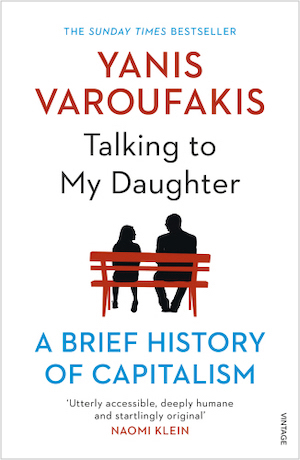
Yanis Varoufakis was Greek’s finance minister during the parts of the Greek financial crisis. In Talking to My Daughter About the Economy, he explains the fundamentals of economics and his view on things. The book is a fairly easy read and well written.
I enjoyed the book to read about fundamentals in a well-explained way. However, it really is written for an audience that has the amount of economics knowledge you would expect an average teenager to have. So in the end, I did not end up taking too many things away from the book.
11. Sophie’s World ☆
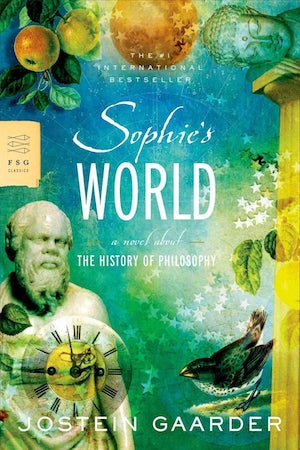
Sophie’s World is a fiction book, in which Sophie, a Norwegian teenager, receives letters with philosophic questions. Curious about the letters, she ends up learning more about philosophy. Over the course of the book, she studies all major philosophers, all while attending high school and dealing with other things going on in her life.
However, there are some mysteries in the book, like who is the person sending the letters? And what is up with some seemingly magical things happening in her life? Sophie ends up investigating these mysteries.
It is hard to describe how brilliant the book is, without spoiling anything. I rarely read fiction books, but Sophie’s World is one of these books that’s better described as art in a written form, and that you just have to read. It really is that good.
12. Nudge

Richard Thaler and Cass Sunstein are professors in behavioral economics. Thaler won the Noble Prize for Economics a few years ago for his contributions to the field. In Nudge, they discuss heir theory of nudging, which describes how designing a decision process impacts how people decide. For example, based on how retirement savings options are presented and how the default is configured, people end up saving very different amounts for retirement. Similarly, people end up picking very different food depending on how supermarkets are organizing.
The book was super interesting to read. I generally really like these pop-scientific psychology books, and this one in particular had a lot of intriguing experiments to read about. I ended up sharing these with lots of people around me.
13. Factfulness
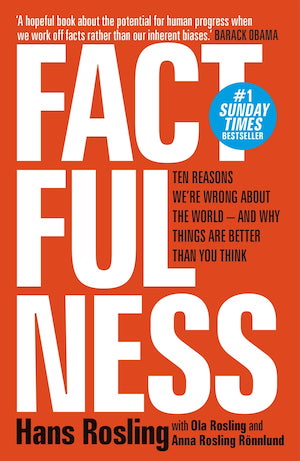
If you read the news regularly, you can be forgiven for thinking that the world is trending in a bad direction and has been for a while. While there are certainly a lot of terrible things happening in the world, that the trend is negative is not true in many, many important areas, like the number of people living in poverty or getting good education.
In Factfulness, Hans Rosling analyzes what progress across the world is really like, and ends up showing that things have in fact dramatically improved in the last decades, and continue to improve. He does this by both analyzing concrete questions and metrics, but also by explaining common instincts people have which make things look much worse than they are.
The book is a brilliant read and really makes one optimistic about the world. I would recommend this book to anyone, but especially to people that consume a lot of news and tend to be depressed by them.
I ended up writing compact reading notes for the chapters.
14. The Cuckoo’s Egg ☆
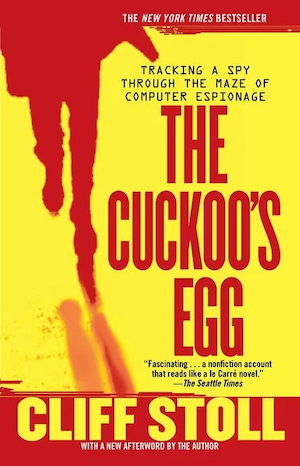
The Cuckoo’s Egg describes the story of the first documented computer hack, in 1989. Clifford Stoll is the author of the book, and the person first discovering the hack. He is an astronomer by training but ends up getting hired by an academic lab in Berkeley to manage their computers.
In their system, each researcher gets a certain compute budget. The system keeps track of who spend how much. Stoll gets asked to investigate a bug where these accounting numbers do not add up. He ends up discovering that there is an unknown user in the system, who used up compute worth a few cents. It turns out that this is a hacker, and this marks the beginning of a game where Stoll tries to track down the hacker over the computer’s network connections.
The book is written like a thriller. I found it impossible to put the book down. In particular, it is intriguing that this was really the first documented hack, thus many people that Stoll asks for help along the way (e.g. security agencies) have no idea what he is talking about, and are not of much help. However, Stoll is incredibly determined and ends up spending a huge amount of energy on trying to track down the hacker.
15. Genius Makers
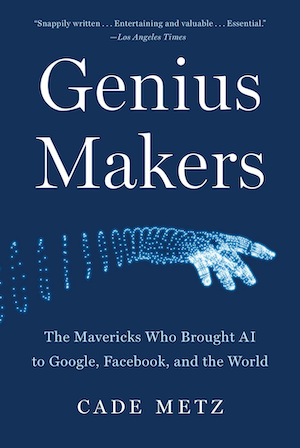
Genius Makers is an account of how the machine learning revolution happened. In particular, it tells the stories of the people that made it happen – Hinton, LeCun, Bengio, et al. For someone working on machine learning, this was an intriguing read, with many super interesting stories.
However, in the end, this is a book about people and how things happen, and much less so about how their ideas work. That’s why I think that this book is probably mostly interesting to people already involved with machine learning, and who know the people that the book is about.
16. Talking to Strangers (Malcolm Gladwell 1/7)
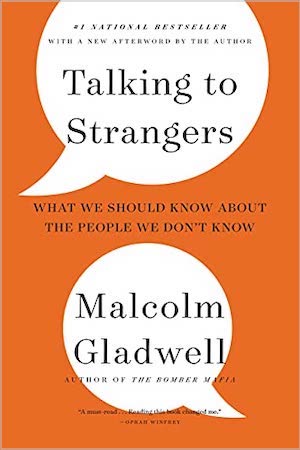
In Talking to Strangers, Malcom Gladwell discusses why we so often have a hard time reading strangers. He does this by investigating famous stories of people not correctly gauging the true intentions of strangers. For example, why did Neville Chamberlain trust Hitler not to invade more countries after invading parts of Czechoslovakia? And how was Bernie Madoff able to trick so many people for their money for so many years?
Malcom Gladwell once described his books as “biographies of ideas”. Talking to Strangers fits that description really well. It is incredibly well written and so intriguing to read. After having read the book, I decided to read all seven of Gladwell’s books this year.
17. The Tipping Point (Malcolm Gladwell 2/7)

All trends have this moment where they turn from something only early adopters follow to something that suddenly everybody hears about. Malcolm calls this moment the Tipping Point. In the book, he discusses how this happens to a trend. In his typical style, he does this by following several stories and analyzing the actions of the people that take part in it.
The Tipping Point is an incredible read. It feels like the academic discussion of how marketing in its highest form ought to work. But at the same time, it is deeply entertaining because you keep reading about interesting stories.
18. Blink (Malcolm Gladwell 3/7)

We make many decisions in the blink of an eye. However, some people are incredibly good at these decisions, and are often not even able to explain how they came to the decision. For example, there are cases of art experts recognizing a fake painting at a first glance, without being able to explain why they believe it to be one.
In Blink, Gladwell investigates these stories, and discusses why some people are so good at quickly gauging some things. If Gladwell’s books are biographies of ideas, then this one is about the positive parts of thinking in system 1.
19. Outliers (Malcolm Gladwell 4/7)
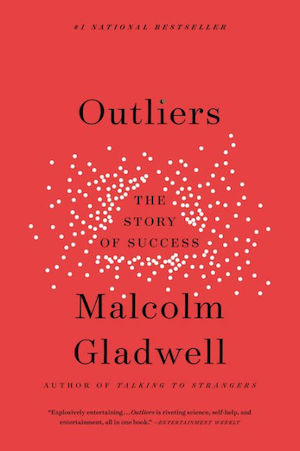
We are often quick to equate outsized success with luck, or, in the other extreme, with pure skill. In Outliers, Gladwell looks at the stories of extraordinarily successful people and distills down what really made them so successful. His answer is that outsized success is based on at a young age being in the right place at the right time, and then working incredibly hard to use one’s advantage.
Like in his other books, he discusses his ideas based on many interesting stories. The fundamental ideas that the book describes are fairly simple and could as well be expressed in a simple essay. However, the stories make the book so fun to read, that it is worth reading the whole book.
20. What the Dog Saw (Malcolm Gladwell 5/7)

What the Dog Saw is a collection of Gladwell’s writings as a journalist for The New Yorker. There is a wide range of topics discovered. For example, why are there so many kinds of mustard, but only one kind of ketchup? What is the difference between mysteries and puzzles, and why does that matter?
The stories are incredibly well written and I loved reading them. Gladwell has an amazing gift for finding good stories where others do not see them, and then writing down these stories in elegant ways.
21. David and Goliath (Malcolm Gladwell 6/7)

The book is based on David and Goliath, the biblical story where a young David defeats the giant Goliath in direct combat. Besides this story, the book tells similar ones, where an underdog surprisingly defeats a seemingly much more powerful opponent. However, these stories might not really be what they seem like: Are the Davids really the underdogs, or are we just sometimes bad at correctly gauging one’s chances?
Gladwell discusses this question and others. Like his other books, it really fits the description of “the biography of an idea” very well. I really enjoyed reading the book.
22. The Bomber Mafia (Malcolm Gladwell 7/7)

Warfare has changed a lot over the past centuries, from infantry to cavalry to tanks. In The Bomber Mafia, Gladwell tells the story of how a group of people in the US military tried to make the case for smarter air-based warfare. Their fundamental idea was that instead of fighting long, deathly wars, it would be much smarter to use planes to take out a small number of strategic targets to quickly end a war. It was not obvious at all whether this could be done, e.g. because of the precision this would require from bombing.
I’m not that interested in military history, so I probably would not have read this book if it were not written by Gladwell. However, the book is really less a story about the military than a story about how a small group of innovators changed the strategy of their larger groups. As such, it was really interesting to read about.
23. Why We Sleep
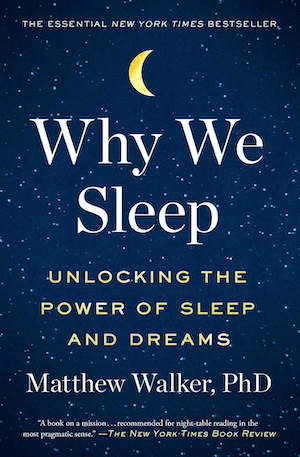
Why We Sleep is a book that argues for why good sleep is really important. It is written by UC Berkeley professor Matthew Walker, who has done a lot of research in the area. Broadly speaking, the book has two kinds of content: descriptions of scientific studies about sleep, and practical advice about how to improve one’s sleep.
While the book has been repeatedly criticized for not accurately representing many studies, it is very effective at convincing one that sleep is crucially important. Even if only half of the studies in the book hold, sleep really matters. So while it is unfortunate that the book was not as rigorously written as it should be, I am still glad that I read it. I managed to really prioritize sleep after reading the book.
24. Sleep

Since I was not entirely content after hearing about the criticism of Why We Sleep, I decided to read another book on the topic. Sleep was that book. It is a more compact book, and much more focused on practical advice than scientific studies.
I ended up taking lots of things away from the book. It is also a really entertaining read. The author advises sports teams on how to optimize their sleep, and has a lot of intriguing stories about that.
25. Empire of Pain
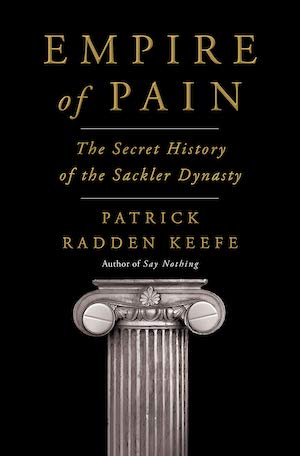
OxyContin was an opium-based pain killer, commonly used in the United States against various things, such as back pain. It turns out that it made a lot of people addicted to it, and that the company developing it was aware of that. Empire of Pain tells this story. However, it is not simply a story of just OxyContin but one of three generations of the family owning the corresponding company, and doing various questionable things in the pharma industry.
The book is written like a thriller. I found it really hard to put the book down. While it is in its core a deeply sad story, the book is also an exemplary case of investigative journalism.
26. Algorithms to Live By
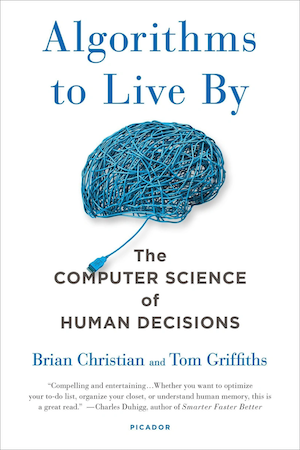
Each chapter of Algorithms to Live By, discusses a concept of computer science and how it can be applied to real life. A typical example of this is the explore-exploit trade-off, which can be applied to many things in daily life, such as picking restaurants.
The book is well written and covers interesting algorithms. However, most of it is also fairly obvious to someone that studied computer science. I would only recommend the book to people coming from other fields.
27. The Monk of Mokha

The Monk of Mokha is the true story of Mokhtar Alkhanshali, who is part of a family of Yemeni descent. He grows up in a troubled part of San Francisco and does not get much of an education. Eventually, he learns that coffee originated from Yemen, a fact that surprises him, given that, nowadays, Yemen exports nearly no coffee beans anymore. He decides to start a coffee business that grows coffee in Yemen and exports it to the world.
The book is absolutely amazing. I had a hard time believing that this really is a nonfiction book. It reads like an incredible adventure.
I also ended up learning a lot of things about coffee while reading the book. For example, I was quite surprised how recent a thing coffee really is, and that a lot of essential techniques for processing it were developed in the US.
28. The Code Breaker
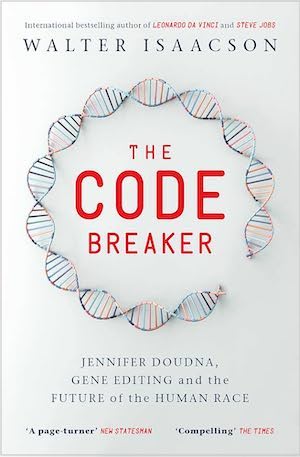
Walter Isaacson has written popular biographies about Steve Jobs, Albert Einstein and Leonardo da Vinci. The Code Breaker is his book about the biochemist and Noble Prize winner Jennifer Doudna. Doudna works on gene editing technology, which became famous under the name CRISPR. The book is as much a biography about Doudna as it is about the technologies she works on and the scientists around her.
I started reading the book because I was curious about how gene editing technology works. However, in the end, the story of how these technologies were developed was even more interesting. The Code Breaker is a scientific thriller and shows really well how academia at the highest level works. It was one of my favorite books this year.
29. The First Minute

The First Minute is a book describing techniques for better communicating at work. It is a quick read and the ideas described are generally sensible. However, it is also a rather shallow discussion of the ideas, and I do not think that I took enough away from the book to recommend it to others.
30. The Undoing Project ☆

Michael Lewis is one of my favorite authors. I absolutely loved his books Flash Boys, Liar’s Poker, and The Big Short. The Undoing Project is his book about Daniel Kahneman and Amos Tversky, two influential psychologists. I’m also a big fan of their work, as described in Thinking, Slow and Fast. As such, The Undoing Project did not disappoint.
While I was expecting that I would like the book, I did not imagine that I would be as enthusiastic about it as I am now. Kahneman and Tversky have lived amazing lives, full of adventures and unforeseen twists. Furthermore, their relationship is incredibly interesting. They both have very different strengths that combine well. However, since they created their great works jointly, the academic community found it very hard to correctly assign credit between the two. That led to many tensions between them.
It is hard to describe how brilliant the book is. Descriptions I read of it do not really do it justice, so I would recommend to just read the book.
31. Lessons in Chemistry

Lessons in Chemistry tells the story of Elizabeth Zott, who is a chemist but works at a cooking show at the beginning of the book. Elizabeth is smart but lives in a patriarchic world that does not take her seriously as a chemist. The book follows her as she tries to find her place in the world, against all odds.
I had seen Lessons in Chemistry several times in book stores before deciding to read it. The story seemed intriguing but the fact that it is fiction – which I rarely read – put me off for a long time. In the end, I am really happy that I read the book.
Elizabeth is a great main character. It is hard to put the book down as one follows her life, and sees her succeed. However, I disliked that all of the characters are extreme versions of what I think people would really be like: characters are either extremely smart or not at all, discriminating or not, supportive in everything or nothing. There is little subtlety in the character traits.
32. How The World Really Works
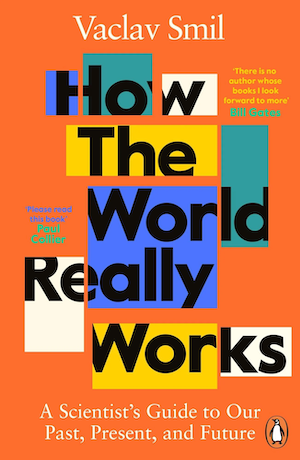
Vaclav Smil is a professor doing research around energy and the environment. In How The World Really Works, he explains how the world works in regards to things like energy usage, food production and epidemics. While the title of the book is fairly generic, the book really is quite focused on energy in particular.
Smil knows what he is talking about and makes a convincing case for his arguments. One of the things I took away from the book is that human progress in the past one hundred years has been astonishing: the amount of energy we have available is absolutely crazy compared to what people used to be able to use.
33. Longitude
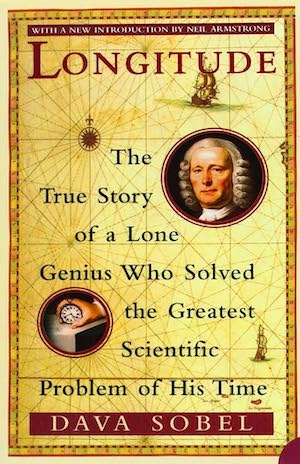
Knowing your current position in terms of latitude and longitude is important for many things, like navigating ships. Quite early, people figured out how to find out one’s latitude position by observing the stars. How to determine longitude was a lot harder to solve, and this remained an open question for a long time, despite many people looking into it and there being considerable economic interest.
Longitude tells the story of John Harrison, who realized that one might be able to compute longitude based on clocks. The scientific community at the time did not take him seriously at all and provided little support to him. Despite this, Harrison managed to build prototypes and in the end convinced the world that his idea worked.
However, the book is much more than a biography of Harrison. It also provides a window into the time that he lived in, where people had not yet figured out good processes for how to do science.
34. Chip War
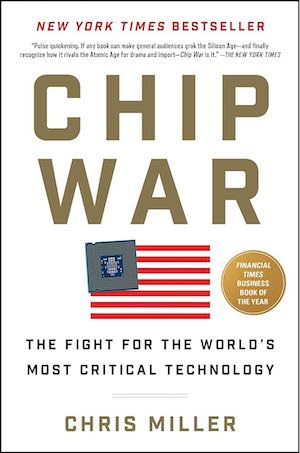
Computer chips power many things these days. Chip War tells the story of how the computer chip industry started in Silicon Valley, and how the place where the chips are fabricated has repeatedly changed. As computer chips have become more important, this has become a geopolitical issue. As such, the book combines a technological story with a geopolitical one.
The book is really well written, and I ended up learning lots of things from it. It is also really entertaining to read about. However, the book contains a lot of hyperbole – it repeatedly states that this is the world’s most important technology. While it is arguably important, one can probably call quite a few things “the world’s most important technology”.
35. You’re Not Listening

Kate Murphy, the author of You’re Not Listening, is a journalist. As a journalist, it is crucial to be able to ask good questions and to listen well. In You’re Not Listening, she describes how most people are not able to listen well, why it is important, and what to do about it.
The book consists of many essays around this topic. It is an important topic, and I tried hard to apply some of the ideas to my life afterwards. The individual essays are somewhat repetitive however. It is one of those books that could just as well be one long essay.
36. Surely You’re Joking, Mr. Feynman
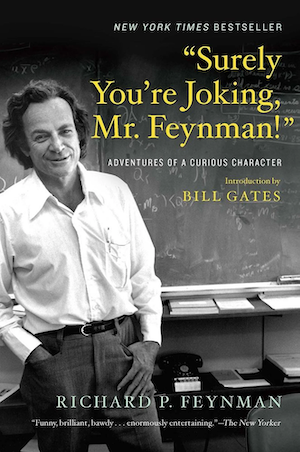
Richard Feynman was a theoretical physicist, who received a Nobel Prize for his work, but who at the same time lived an adventurous and quite entertaining life. Surely You’re Joking, Mr. Feynman is his book, written in the style of an autobiography. Each chapter tells a different story of his life, in mostly chronological order.
About 90% of the stories are really entertaining, funny and a joy to read. In particular, I found really inspiring one of his annecdotes on losing motivation to work on physics, then deciding to just play around with things, and in turn doing his most impactful work, which led to his Noble Prize.
The problem with the book are the remaining 10% of the stories. As has been repeatedly criticized, those are somewhere between creepy and outright sexist. I was quite shocked when the first of those stories appeared in the book. Even though this kind of stuff only makes up a small part of the book, it ended up ruining the book for me.
37. The Manager’s Path

The Manager’s Path is a book about career advice for software engineers that turn managers. It follows the path of a successful engineering manager: from individual contributor to tech lead, manager, director, VP, and finally CTO. Each of these stages gets a chapter in the book.
The book has a lot of great advice and I found it worth reading it out of curiosity. I especially liked the structure of the book – it has an apt title.
38. Back Mechanic

Stuart McGill was a professor at Waterloo, where he investigated back pain. Back Mechanic is his book which describes his research, findings and advice. The book is much more scientific than previous material I had read on back pain.
I am really happy that I found the book and read it. I ended up taking lots of things away from it, including some things I had previously done incorrectly. The book is now my top 1 recommendation to anyone struggling with back pain.
39. Thinking in Bets

Annie Duke worked as a professional poker player, achieving lots of impressive things during her career. In Thinking in Bets, she describes the lessons she learned about decision making, and how those relate to both poker and the real world.
Poker has some interesting properties when it comes to evaluating decisions. There is a lot of random noise in the outcome of your decisions. So even if you make good moves, based on the information you have and the expected values of the possible outcomes, it could be that you end up with a loss. When evaluating your play to learn from it, it is important to be aware of this. Instead of simply looking at what you did and how it turned out, you should consider whether you played the best possible move you could have played with the information you had at the time.
While that sounds obvious, most people do not follow this idea. The book was really influential in changing the way that I think about decisions. After reading it, there were a couple of instances where I told someone that something turned out badly, but that I still made the right decision. That was something people did not find intuitive at all.
40. Klara and the Sun
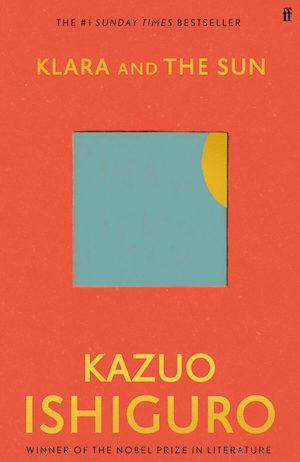
Klara and the Sun takes place in a future where technological progress has continued and robots are common in daily life. Klara is a robot designed to be a kid’s best friend. She is purchased by a mother and daughter, and Klara thus moves into the child’s bedroom.
However, not everything is at it seems. The girl’s sister recently died in unexplained circumstances and she herself has some illness as well. The book is written in Klara’s perspective, who tries to navigate social life in her new family, while trying to figure out what is really going on.
I found the book to be superbly written. I have also been wanting to read a book from Kazuo Ishiguro for a long time, and this was a great first choice.
41. Breath: The New Science of a Lost Art

Breath is an exploration into how we breath: why the way we breathe matters and how it impacts the body. It discusses mouth vs nasal breathing and similar topics. Many cultures have at some point figured out that nasal breathing has various advantages but nowadays people are not as aware of it anymore (lost art). However, there is an increasing amounts of studies on the topic (new science).
While the description might not sound very interesting, I found the book to be brilliant. As someone that has always breathed through my mouth and had trouble with nasal breathing, I was probably also the target audience for the book. It was super intriguing to read about how humans evolved to have multiple modes of breathing and what kind of things it impacts.
42. Plunder: Private Equity’s Plan to Pillage America
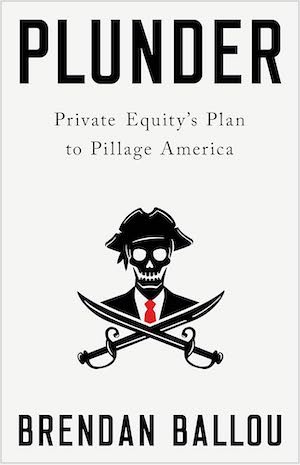
Private equity has always been somewhat mysterious to me. You hear the term more often these days, but I was not really clear on what it actually means. Thus, I decided to read Plunder, which discusses the topic of private equity.
The explanations in the book are great and the book definitely saturated my curiosity. It is worth noting that the author has a really negative view on private equity, so it is not necessarily an unbiased discussion on the topic. While a lot of his criticism seems apt, I think the book would have profited from a clearer distinction between what private equity is and why the author thinks it is bad for the US.
43. Eat Pray Love

Eat Pray Love is the true story of Elizabeth Gilbert, who after two failed relationships decides to take a year off in order to find herself. She spends the year in equal parts in Italy, India and Indonesia. The book follows her along her journey.
Initially, I thought that I would find the book to be too corny. However, I ended up really liking the book. Her story was quite meaningful to me. I also really liked the witty style that the book is written in.
44. Unwired
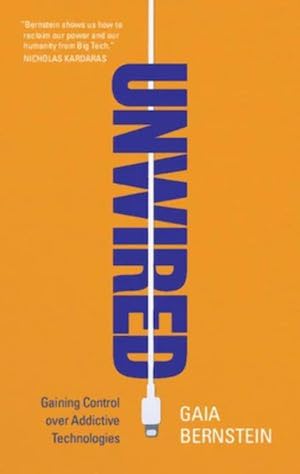
We spend more and more of our time in front of screens. Much of that is spend on social media in particular, which is often designed to make people addicted to it. Unwired is a book that discusses this issue and what to do about it. The author compares social media nowadays to how tobacco and fast food companies used to operate.
While I found the author to be quite dogmatic about the topic, most parts of the book still resonated with me. After reading the book, I drastically reduced the time that I spend on my phone. I am also now way more aware of how commonly people take out their phones while talking with others, without really realizing what it does to the flow of the conversation.
45. Outlive ☆
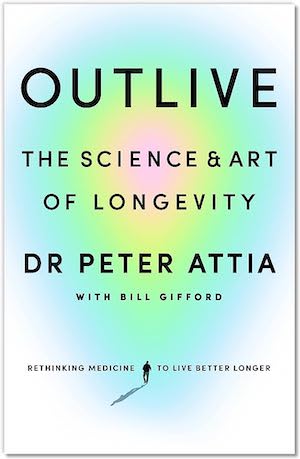
In Outlive, Peter Attia discusses the art and science of living a long and healthy life. His fundamental theory is that medicine has evolved in different stages. Medicine 1.0 was the crude medicine that people started out with, which was not a very structured approach to helping people. The discovery of antibiotics started Medicine 2.0, which fundamentally worked by waiting for an illness and then treating it with the right kind of medication. Attia suggests that we should now start with Medicine 3.0, which is not reactive but instead proactively tries to avoid most illnesses.
The book is split into two parts. In the first part, Attia discusses the four most common killers: heart problems, cancer, diabetes and neurodegenerative diseases. Medicine 2.0 cannot deal well with any of these, thus motivating the more proactive approach of Medicine 3.0. In the second part of the book, Attia discusses various things one can optimize to do stay healthy, e.g. sports and nutrition.
I found the book to be amazing. His description that medicine nowadays is too reactive resonates a lot with me. The book is well written and has a ton of great, practical advice.
46. Dopamine Nation
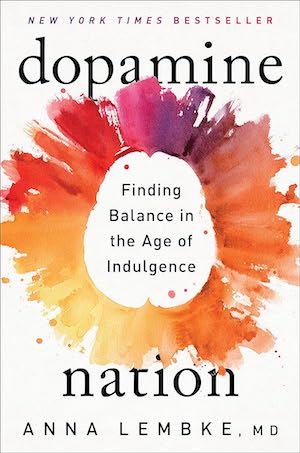
Dopamine is a neurotransmitter that regulates pleasure and motivation. In Dopamine Nation, Anna Lembke, a psychiatrist and Stanford professor, discusses addictions of all sorts, some serious and some not so serious. She explains what causes addictions and how to deal with them. During all of this, she recounts interesting stories from her time as a psychiatrist.
I found the book to be super interesting and well worth reading. I also saw a lot of connections to Unwired.
47. trauma: the invisible epidemic

Paul Conti is a psychiatrist focused on traumas. In trauma, he recounts different forms of traumas and how they impact people. Just like Dopamine Notation, the advice is intertwined with stories from his time as a psychiatrist. The book is interesting and written with a lot of empathy.
48. Build to Move
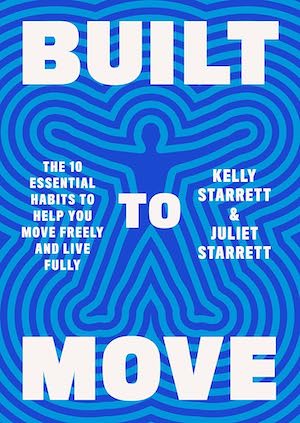
Humans are build to move. People are becoming more and more sedentary though, leading to all sorts of aches. Build to Move describes principles for an active and healthy life to counter this trend.
Each chapter starts with a test of what a healthy life should look like. Then, the rest of the chapter discusses why this is important and how to improve. Many different topics are covered, from flexibility and stability, to walking often and eating well, breathing correctly, and more. I really enjoyed the book and adapted my behavior in various ways because of the book.
49. Atomic Habits

Habits make a large difference. If we consistently do something over a long time, even small habits can really add up. Atomic Habits is a book that discusses how to form good habits and what one can do to keep habits going.
The book is well written and provides a lot of good advice. I was a bit skeptical initially because a lot of productivity books really reduce down to one simple idea, but Atomic Habits kept discussing interesting things throughout the book.
50. Ready to Run
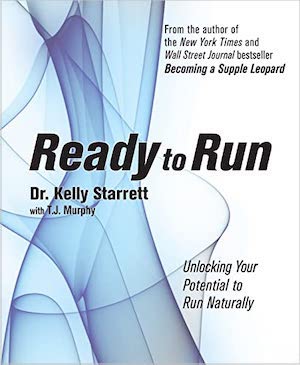
From the Build to Move author, this is another book around healthy living, this time focused on running. The structure of Ready to Run is the same as of Build to Move, with each chapter discussing a test and how to improve.
As I started running again regularly this year, I appreciated the advice a lot. I was able to take a lot of things away from the book and have since recommended it to some friends who also run.
51. Oxygen Advantage

After having read Breath and being quite enthusiastic about it, I decided to read another book on the topic, but one that is more focused on concrete advice. Oxygen Advantage end up being that book. The central idea behind the book is that good breathing is (1) nasal, (2) utilizes the diaphragm well, and (3) occurs at the right frequency, which is much less often than most people would think.
While that was useful to learn – and in line with what I heard before – the rest of the book was incredibly disappointing. The author connects all kinds of diseases to incorrect breathing and goes quite deep into pseudo science. I would not recommend the book.
52. When the Body Says No
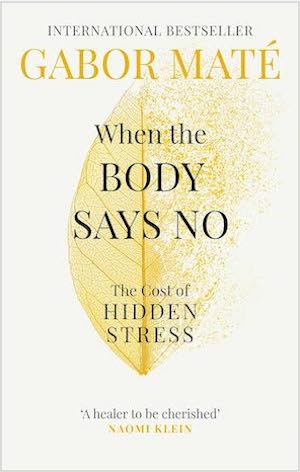
In When the Body Says No, Gabor Maté discusses the influence of stress on the body. While we often think of stress as something mainly mental, it can impact all sorts of things, from digestion to your heart rate. The book discusses this with the intent to show why it is so important to manage one’s stress.
While the stories in the book get very repetitive, I found it to be an important book to read. I became much more aware of my own stress afterwards.
53. Gut: The Inside Story of Our Body’s Most Underrated Organ
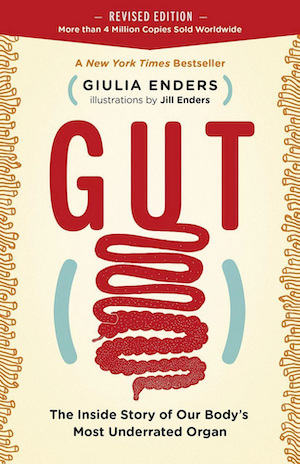
While one’s gut might not seem that interesting, it is a crucial part of the body. Gut: The Inside Story of Our Body’s Most Underrated Organ discusses how it works and why it is important.
The book is really well written. It is incredibly funny and entertaining, much more than I expected a book about the gut to be. I was also really surprised by how much is going on in the gut. For example by the fact that the gut has its own neurons, and by how fascinating microbiomes are.
54. Going Infinite
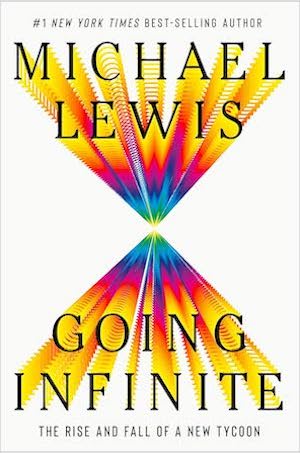
In Going Infinite, Michael Lewis tells the story of Sam Bankman-Fried, the founder of Alameda Research and FTX. When I heard about the book, I got really excited because the mix of finance and interesting characters seemed like the perfect story for Michael Lewis, since that is pretty much the essence of some of his other books like Flash Boys.
The book has around 250 pages. The first 200 of those I found to be amazing. The story is really intriguing, the characters are interesting and you keep wondering what is going to happen. I really enjoyed those parts and read them very quickly.
My problem with the book were the last 50 pages. Alameda Capital and FTX ended up being a fraud, which I expected the book to discuss much more. While the last 50 pages do discuss this, everything happens so abruptly and so fast that it was hard to follow along. I am still a bit unsure about what actually happened. Unfortunately, the book helped little to clarify that.
Looking back at the year, I am really happy with the breadth of books that I read. I am especially happy that I discovered biology and health books for me. I plan on reading more of that genre next year.
When the year began, I had about 25 books on my reading list. I was wondering whether I would find enough interesting books to keep my habit of one book a week. That ended up not being a problem at all.
Now, as 2024 starts, I again have about 25 books on my reading list. It is pretty remarkable that we live in an age with so many interesting books that are easily available.